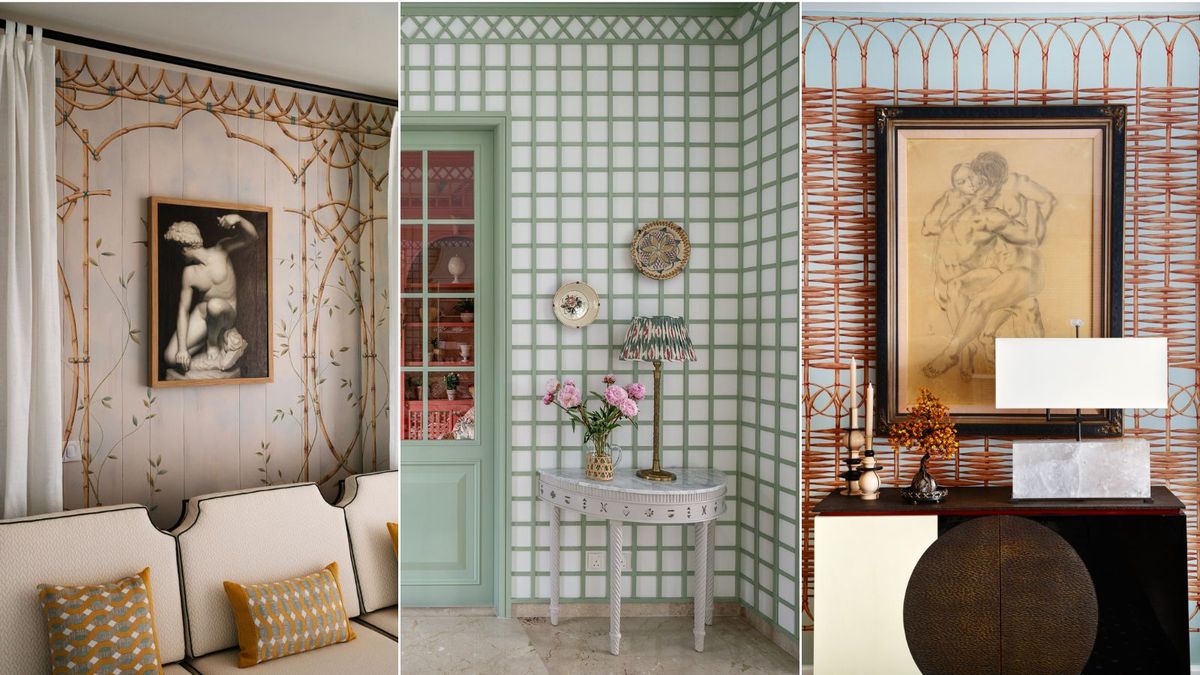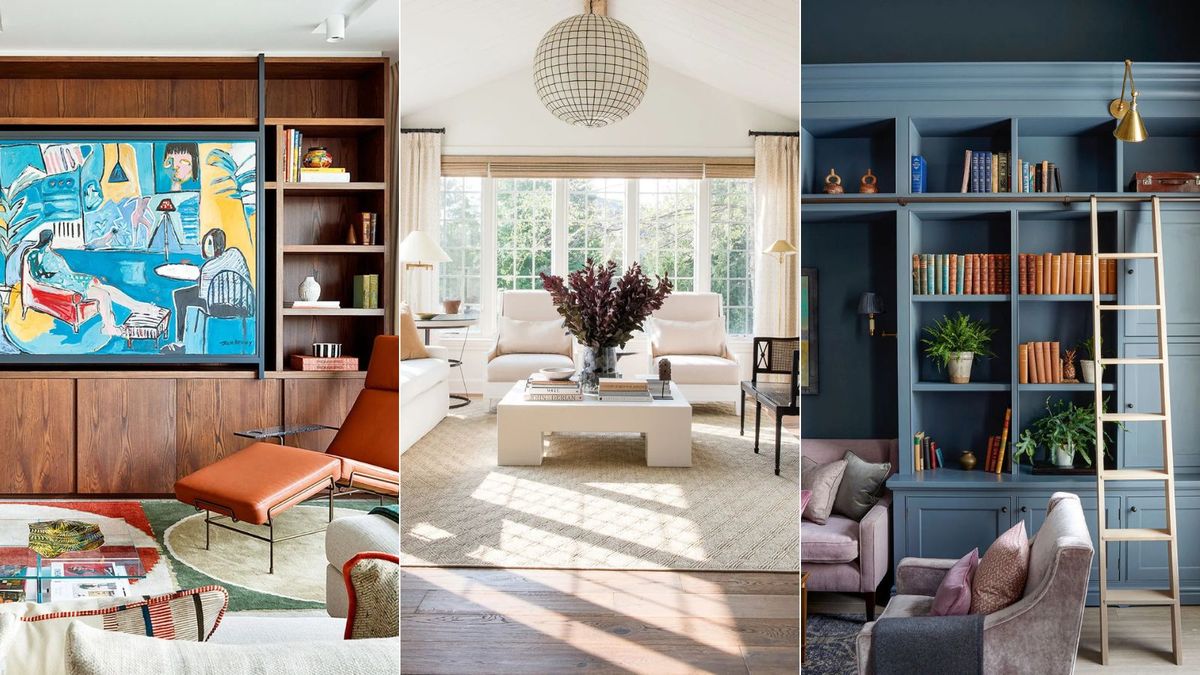How Social Media Is Influencing Interior Design Inspiration



“SHOULD I GET the rattan bedside table or sculptural stump in cherry?” someone asks on Instagram. A basic home design query, once reserved for family and friends in the know or that of interior designers, is now one for followers — whether it’s a genuine question or thirst for clout. What likely began with fashion, where people would ask those on social media what dress they should get from Zara or a luxury purchase flex, has led to a full blown interiors obsession online.
Today, we’re taking our online personas to the next level: going public with our inner sanctums. We’re revealing our master renovation plans or possible options for that empty corner (everything is content, remember?); or scrolling for interiors inspiration while we binge-watch a new show rather than online shopping for clothes. Sometimes inspiration looks like a fad best left forgotten (2022’s Barbiecore craze, sorry); other times, it can be a total room enhancer. Your home is your sanctuary, after all. It’s all part of a wider shift in content curation and consumption, with internet aesthetics setting the overall tone — we all know “cottagecore” and “quiet luxury” aren’t just for fashion — influencer advertising; and a general democratisation of trends. There’s a dupe for every luxury or It-item now.
But in the age of social media, where seemingly everyone’s open for “home influencing” business — how does one develop a signature style? It’s a conundrum we’ve been coming to terms with in relation to our wardrobes, but now it’s something that extends to our homes too.
“There has definitely been a shift in the proliferation of ideas, design and stylings of one’s internal space in the past few years,” Melbourne interior designer, Brahman Perera began when talking about the online fashion-turned-interiors flex. “‘Content’ is currency, so it is no surprise that the way our spaces are documented and what lies within is now more of a commodity than ever before.”
It is NO SURPRISE that the way OUR SPACES are DOCUMENTED and what lies within is NOW more of a COMMODITY than ever before






Like magpies, we collect various influencer-approved aesthetics on Instagram, TikTok and even Pinterest (the latter millennial platform has now seen a Gen Z renaissance, by the way) — all based on today’s dominant trends or microtrends, which are determined by the internet’s top dog: the algorithm. If we “Like,” “Share” or simply click on a piece from our Instagram “Explore”, we’ll be fed more of the same fern-coloured kitchens à la Dakota Johnson or concrete slabs as seen in Kim Kardashian’s divisive home. It’s self-perpetuating and seemingly inescapable. Not to mention, only further challenges one’s personal taste and authenticity.
Then you’ve got home influencers promoting paid products, schemes or DIY hacks — which aren’t necessarily translatable to every home, physically or aesthetically. A pot rack might look charming, but can it actually fit above my stove? Would it be a hassle to use? Can I even build it? They’re all thoughts we later ruminate over, when we come to realise function over form matters. Sometimes amateurs present what’s pretty rather than what’s actually practical. Again, we’re all magpies.
“I think it’s important to not be cynical about the current culture of ‘hacks’, ‘dupes’ and DYI,” Perera acknowledges. “I believe there should be a space for everyone to express themselves and their ideas.”
For him, at 24K followers on Instagram, it’s “created new audiences from different part of the world,” for what is largely a location-based career. However, he’s wary of the internet’s yearn for instant gratification. “What I might consider the potential negative fallbacks from this online culture is just that there is a desire for immediacy within design.”
With years of academic and professional experience, he’s also behind some of our most beautiful spaces: Melbourne’s iconic French brasserie Entrecôte; Sri Lankan diner Hopper Joint, of which he co-owns; Ursula’s Paddington and both Henne stores in Melbourne and Sydney, Perera not only knows what works but has the contacts to service them, like other experts of the trade. Developing a home and purchasing key pieces often takes “years or decades” he notes — far longer than considering one’s wardrobe choices. It requires reflection, cultivation, and usually a lot of help.
“While as a designer, I may work on the full-scope of a project in under 12 or even 6 months, I don’t think the quick fix attitude is a positive outlook,” Perera shares on the need for patience with interior design. “It puts a lot of pressure on consumers, and the outcomes will invariably lead to what we have seen in the fashion world of unethical high street manufacturing.”
The potential NEGATIVE FALLBACKS from this ONLINE CULTURE is just that there is a DESIRE for IMMEDIACY within design
We’ve seen this with the Murano mushroom lamp, Gwyneth Paltrow’s CB2 ivory bouclé swivel chair, and even Samsung’s Frame TV — all bearing knock-offs on Temple & Webster, Etsy, Amazon and beyond. Then of course, trusted budget retailers have turned their attention to the interiors equivalent of fast fashion, appealing to the Gen Z audience who have the eye but not the budget to match it — we’re talking Kmart, H&M and Zara Home, all of whom sell covetable designs at accessible costs. Now, whether you’re pro dupe or not is a matter for the court of public opinion. But there’s no denying it’s given greater access to “luxury” items. Why shouldn’t we be able to have nice looking furniture without needing to dip heavily into our savings? “This started as a personal problem — I wanted nice-looking furniture without paying a crap ton of money,” a duper on Reddit wrote.
“I do think it’s important that there are platforms online that promote accessible design and ideas, as I think a world of design that is only curated and gatekept by the wealthy and influential is something homogenous and dull,” Brahman agrees.


What else is dull? Total cohesion. It sounds wrong, but purchasing everything from the same brand or style doesn’t catch the eye as much as sound balance and contrast. And with social media tending to favour certain It-designers and viral aesthetics, it can be hard to see the bigger picture. Something that’s liveable and authentically you isn’t a quick floor-to-ceiling Scandinavian or Mid-Century job (as lush as they both are). It’s the juxtaposition of ideas, sourcing and journeys which, long-term, make a house a home. “It may not be the most popular answer, but I do believe the way to authentically develop a meaningful style is to take your time.”
I like to think of it as as dressing oneself. You wouldn’t necessarily go matchy-matchy or be decked out in head-to-toe designer wares. You might wear a €5 ring from Greece with a Chloé camisole, SIR shorts and flip flops from Zara. A high-low approach which tells a story also works with how you furnish your home.
“As a direct reflection on who you are and how you see the world, style is something that is developed through experiences, through collecting objects that are meaningful to you, through your own personal appreciation of other qualities,” Perera explains. Consider your interests — do you like music, cooking, reading or even swimming in the ocean? — and reflect on the past. When was the last time something really stirred you? Travels are a good way to start here. What does comfort look like to you? Then, think about how to lightly pepper those elements into your home.
STYLE is something that is DEVELOPED through EXPERIENCES, through COLLECTING objects that are MEANINGFUL to you
“When I am working with clients on residential projects, I like to try and include as many pieces they already own, to create a narrative that is authentic and unique to who they are,” Perera shares. “Take your time, and consider it a life’s work — something that you will be developing forever.”
Like most things, though, starting your home design journey is the hardest part. Perera advises you start small and with something you “love.” “It doesn’t matter if it’s a paint colour, or an armchair, it can be anything at all. When you focus on that piece or element, the decisions surrounding it will inform each other and create something cohesive,” he advises.
Design is often a process of addition and subtraction, so if you don’t end up loving that round oak coffee table in the lounge — find another place for it, or consider re-homing it. “Don’t be afraid to remove elements or pieces when you’re in the planning stage if they stop making sense to you,” Perera continues.
We all have taste, to answer the primary question. Some just may have a more developed palate than others, based on what they’re exposed to — social media should be used to tickle imagination rather than rely on for imitation — and a deep understanding of oneself. As Diane von Furtensberg once said, “style is something each of us already has, all we need to do is find it…”. And when it comes to interior design, Instagram’s part of the journey — not the destination.
Related: Taking up chic space with Brahman Perera


link




:max_bytes(150000):strip_icc()/small-kitchen-ideas-mix-and-match-1021-99fbfaafe683423aa2af7d711d334e44.jpg)

:max_bytes(150000):strip_icc()/rs-roundup-living-room-wall-decorations-is-trending--amazon-options-under-100-tout-c4634ee28a7e47129b84f021c5414f05.jpg)
